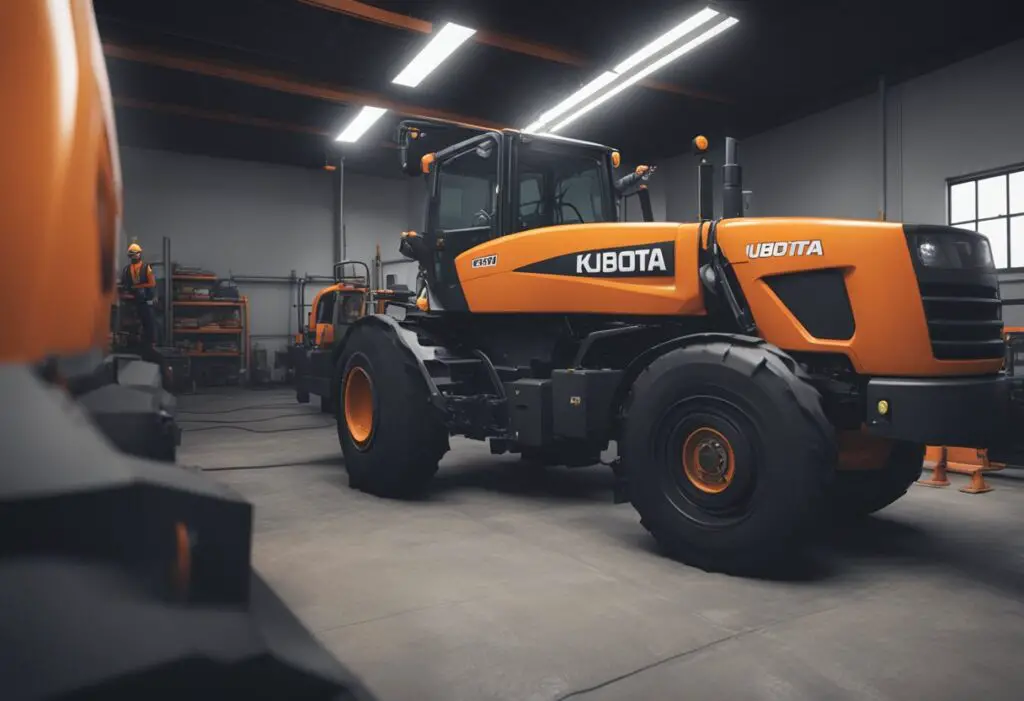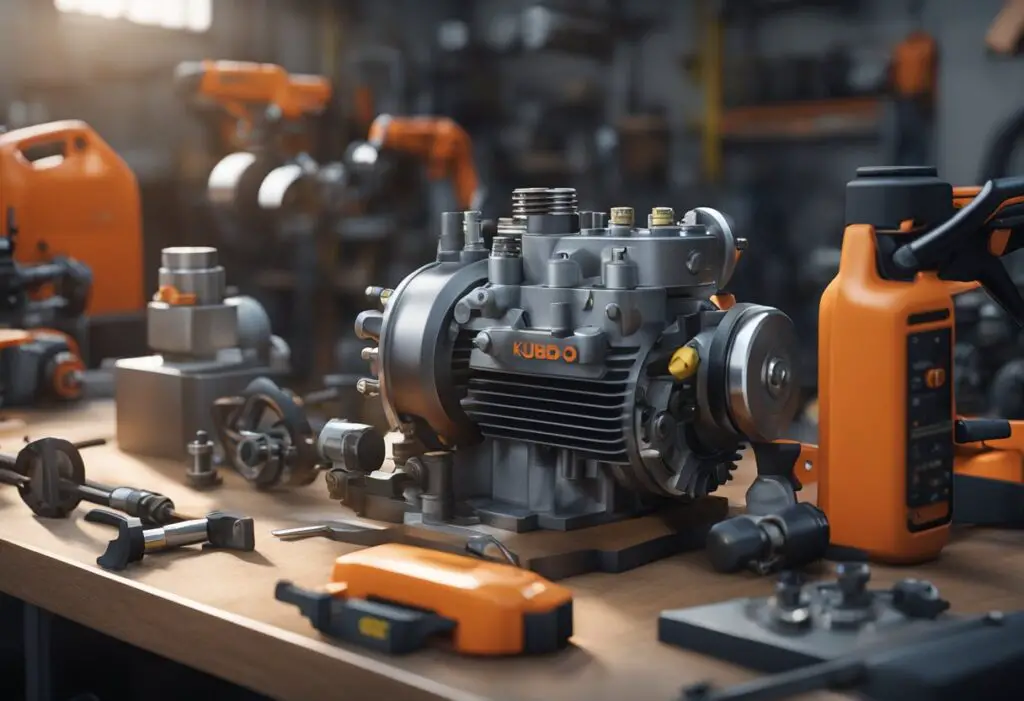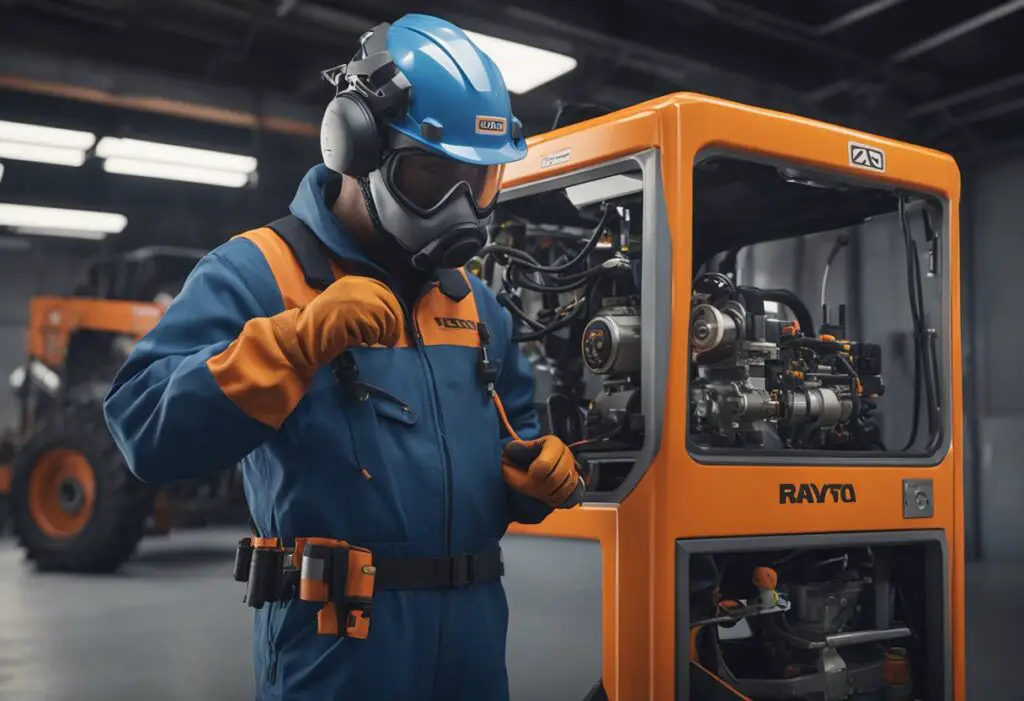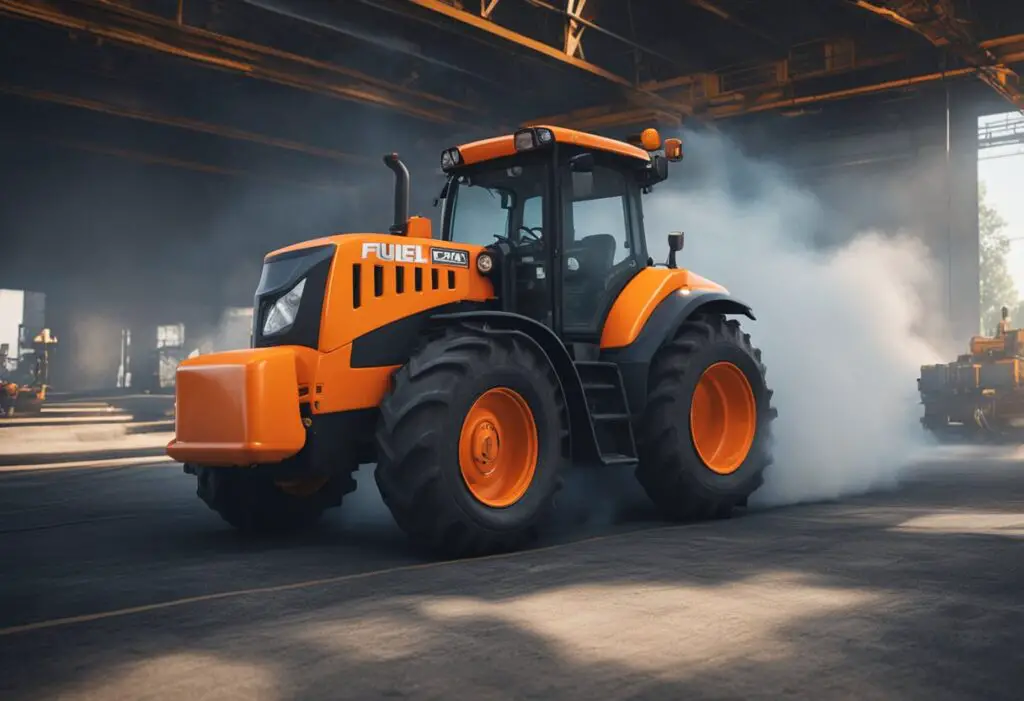Kubota fuel shut off solenoids are essential components in the fuel system of diesel engines, playing a critical role in the safe and efficient operation of vehicles and machinery. These solenoids serve as an electrically-operated valve that controls the flow of fuel to the engine. When you turn the key in the ignition, the solenoid activates, allowing fuel to pass through so your engine can start. Conversely, when the engine shuts off, the solenoid closes, blocking the fuel flow and preventing leakage or unintended engine running.

However, issues with the Kubota fuel shut off solenoid can arise, resulting in start-up problems or unexpected engine shutdowns. Some common symptoms include failure to start, intermittent operation, or unusual noises like clicking or vibration from the solenoid area when attempting to turn on the engine. Electrical problems, such as inadequate voltage supply or faulty wiring, can contribute to solenoid failures. Regular maintenance of the fuel system and timely diagnosis of solenoid issues are crucial for ensuring your Kubota engine performs reliably.
Related read: Kubota Tractor Problems: Tips, Tricks, Fixes and More
Key Takeaways
- Understanding the function of the fuel shut off solenoid is essential for diagnosing engine start-up problems.
- Regular inspection and proper maintenance of the solenoid and fuel system prevent unexpected issues.
- In case of solenoid failure, prompt troubleshooting and replacement are key to minimizing engine downtime.
Understanding the Kubota Fuel Shut Off Solenoid
In your Kubota engine, the fuel shut-off solenoid plays a crucial role in the seamless starting and stopping of the engine by controlling the flow of fuel.
Definition and Function
The fuel shut-off solenoid is an electromechanical device designed to control the flow of fuel to your engine. When your key is turned to the “on” position, the solenoid becomes energized, pulling a plunger back and allowing fuel to flow. Conversely, when the engine is turned off, the solenoid is de-energized, and the plunger returns to its position, effectively stopping the flow of fuel and shutting down the engine.
Key Components
- Energizing Coil: When power is supplied, this coil activates the solenoid.
- Plunger: Moves within the solenoid to start or stop fuel flow.
- Voltage Source: The electrical supply that activates the solenoid, usually around 12 volts.
Location in the Engine
Your Kubota’s fuel shut-off solenoid is typically located on or near the fuel injection pump. Its positioning is strategic, ensuring it can effectively control the passage of fuel directly before it enters the engine’s combustion chamber. This helps in managing the engine’s operation and is vital for complying with emission standards.
Diagnosing Solenoid Issues
Your Kubota’s fuel shut off solenoid is vital for starting and stopping the engine smoothly. If you’re encountering issues with it, specific symptoms and diagnostic tools can guide you through identifying the problem.
Common Symptoms
- Engine not starting: Your tractor doesn’t start, which may point to a failing solenoid.
- Vibrations without click: You might feel the solenoid vibrate when the key is turned off, but the lack of a distinct click upon key activation could indicate a malfunction.
- Check Engine Light: An illuminated check engine light may also suggest solenoid issues.
Diagnostic Tools
- Test Light: This tool is useful for checking the presence of electrical power at the solenoid.
- Multimeter: To measure voltage, a multimeter is essential. Solenoid issues can become evident when voltage readings are inconsistent with the manufacturer’s specifications.
Testing the Solenoid
- Power Check: Use a test light or multimeter to confirm whether 12 volts reach the solenoid when activated.
- Operation Test: Listen for the solenoid click when the key is turned on and off. No sound typically points to a failure in the solenoid’s movement or electrical issues.
- Visual Inspection: Look for any damage to the solenoid itself, such as missing plungers or signs of overheating or wear.
By observing these symptoms, employing the right diagnostic tools, and methodically testing your solenoid, you can pinpoint the issue effectively.
Electrical Problems and Solutions

When addressing the electrical issues with your Kubota fuel shut off solenoid, you’ll need to inspect a few key areas including wiring, fuses, and power supply. Let’s diagnose what might be causing your solenoid problems and look for efficient solutions.
Wiring and Connections
Start by examining the wires leading to and from the solenoid. Ensure they’re securely connected and haven’t been damaged. Look for any signs of wear, corrosion, or breaks that might cause an open circuit. A simple test with a multimeter can help you check the continuity of the wires. If you find damaged wiring, it’s important to replace it to restore proper function.
Checking Fuses and Relays
Your Kubota’s fuse box is your next stop. Check all fuses related to the fuel shut off system; a blown fuse could be the culprit and is easy to replace. Identify the relays associated with the fuel system and test them for functionality. This is crucial as they can behave like switches that control the power flow to the solenoid. A faulty relay may provide intermittent connection or none at all.
Battery and Power Supply Issues
Finally, verify the health of your battery since it provides the necessary power to your solenoid. The voltage should measure around 12 volts for a healthy battery. Any reading significantly under this can point to a battery issue. Inspect the solenoid for its power draw – ideally, it should receive close to 12 volts when activated. If it’s receiving insufficient voltage, investigate the path back through the ignition switch, looking for voltage drops. Remember that proper amps are also essential for the correct operation of electrical components.
Fuel System Maintenance

Proper maintenance of your Kubota’s fuel system is crucial for the longevity and performance of your tractor. Regular checks and replacements can prevent common issues like clogged lines or faulty injectors which may lead to solenoid problems.
Fuel Filter Replacement
Replacing your fuel filter is a key step in maintaining a clean fuel system. Here’s how you can keep your fuel clean:
- Frequency: Check your owner’s manual for the recommended replacement interval. Generally, replace your fuel filter every 200 hours of operation or once a season, whichever comes first.
- Process:
- Turn off the engine and release fuel system pressure.
- Locate the fuel filter, usually along the fuel line.
- Remove the old filter and install a new one, ensuring all seals are properly fitted to prevent leaks.
Fuel Pump and Injectors
The fuel pump and injectors are essential for delivering fuel efficiently to your engine.
- Fuel Pump: Ensure it’s delivering the correct pressure. A pump producing low pressure can lead to fuel not reaching the engine optimally.
- Fuel Injectors: Keep injectors clean and free from deposits. Periodic inspection and cleaning according to your manual’s guidance help ensure consistent fuel delivery.
Fuel Tank Care
Keep your fuel tank in good condition to prevent contaminants from reaching the fuel system.
- Inspection: Regularly inspect the tank for rust, sediment, and water which can cause blockages or corrosion.
- Cleaning: Drain and clean the tank if you find contaminants during inspection.
Remember, maintaining each component of your fuel system not only extends the life of your Kubota but also helps in avoiding fuel shut off solenoid issues.
Solenoid Replacement and Upkeep

Maintaining the performance of your Kubota engine includes the periodic assessment and potential replacement of the fuel shut-off solenoid. Doing so ensures effective fuel flow shut down.
When to Replace
Your Kubota fuel shut-off solenoid might need replacement if you notice your engine fails to stop when the ignition key is turned off or if the check engine light illuminates due to solenoid malfunction. Vibrations or a lack of a clicking noise when the ignition is turned might also signal a problematic solenoid.
- Failed shut down: Engine doesn’t stop when turning off the key
- Check engine light: Illuminates due to solenoid issues
- Voltage issues: If a multimeter shows incorrect voltage to the solenoid when engaged
Choosing the Correct Solenoid
Choosing the correct Kubota fuel shut-off solenoid means ensuring compatibility with your model. It’s crucial to select a solenoid with the correct specifications, including:
- Voltage: Typically 12 volts
- Fitting: Ensures it correctly connects with your engine’s fuel system
- OEM Part Numbers: Match these to ensure compatibility
Refer to your Kubota engine’s manual to find the exact part number for the fuel shut-off solenoid.
Installation Guide
For successful installation of your new fuel shut-off solenoid:
- Disconnect the battery: Prioritize safety by disconnecting to avoid short circuits.
- Access the Solenoid: Locate the solenoid, which is usually near the injection pump.
- Remove Old Solenoid: Disconnect the wiring and remove the faulty solenoid unit.
- Install New Solenoid: Attach the new solenoid and securely fasten it.
- Reconnect Wiring: Use a wiring diagram to ensure correct wiring connections to the coil of the new solenoid.
- Test: After reconnection, test the solenoid by turning the key to the on and off positions; listen for the click.
Note: For specific wiring diagrams, refer to your Kubota tractor’s service manual or contact a professional mechanic to ensure proper installation. Always wear safety gear and work in a well-lit environment.
Troubleshooting Other Common Issues

Before diving into specific issues, know that identifying and fixing problems early can save you time and costly repairs. Keep your Kubota running smoothly by understanding how to troubleshoot these common issues.
Solenoid Malfunction Causes
Your fuel shut-off solenoid is critical for stopping fuel flow when you turn off the engine. If it’s not functioning properly, check these aspects:
- Fuses: Ensure the fuse connected to your solenoid hasn’t blown, preventing power from reaching the solenoid.
- Wiring: Inspect for damaged or frayed wires causing a short that could affect solenoid operation.
- Dirt and Debris: A solenoid can get clogged with dirt. Clean it to allow free movement.
Consider carrying spare fuses and a basic toolkit to deal with these issues as they arise.
Tractor-Specific Problems
Some issues may be particular to your model. For example:
- Kubota D722 Engines: If you have this engine in your mower, be aware that solenoid problems might manifest as difficulty starting the engine or unexpected shutdowns.
- Older Models: If your Kubota is several years old, its components like switches and solenoids may be more prone to wear and tear.
When diagnosing, always refer to your model’s manual for guidance.
Environmental Factors
Your working environment can influence the performance of your tractor:
- Temperature: Extreme cold or heat can affect solenoid functionality. In winter, use measures to protect your equipment.
- Moisture: If the solenoid or its connectors get wet, they’re more likely to corrode or fail. Avoid power-washing directly on the solenoid.
Regular maintenance can mitigate these environmental impacts and extend the life of your solenoid and other components.
Additional Considerations and Tips

When addressing issues with your Kubota fuel shut off solenoid, it’s important to consider the logistical aspects such as warranty coverage, shipping concerns, and proactive steps you can take to avoid problems. Let’s dive into these often overlooked – but crucial – components of managing your Kubota’s maintenance needs.
Warranty and Returns
Your Kubota tractor is a significant investment, and the fuel shut off solenoid is a vital component. If you encounter issues with it, check your warranty first. Most new parts are covered for a specific period, which means you could be eligible for a free replacement or repair. Always keep your receipt and document the issue as soon as it arises. If a return is necessary, prompt action will help ensure that you meet the return window set by the retailer or manufacturer.
Import Duties and Shipping
When you order a replacement solenoid or parts for your Kubota, you need to be aware of any import duties if the part is coming from outside your country. These fees can add to the overall cost and might influence your buying decision. Additionally, consider retailers that provide free shipping to save on costs. Make sure to check shipping times as well; you wouldn’t want to leave your tractor out of action waiting for parts if you need it in full operation.
Preventative Measures
To minimize the likelihood of future solenoid problems, implement preventative measures:
- Regularly inspect your wiring to prevent damage that could lead to solenoid failure.
- Use a timer for operations to avoid overworking your Kubota.
- Protect the dash and windshield area where your solenoid and other electrical components may be located; exposure to the elements can cause wear over time.
- Ensure good air flow to the engine to prevent overheating, as excess heat can affect solenoid performance.
By taking these practical steps, you can maintain your Kubota’s solenoid functionality and prevent sudden machinery failures.
Frequently Asked Questions
When dealing with Kubota fuel shut off solenoids, it’s common to encounter certain issues. Here you’ll find targeted questions to guide you in identifying symptoms, troubleshooting, and resolving problems related to the fuel shut off solenoid in your Kubota engine.
What are common indicators of a faulty fuel shut off solenoid in Kubota engines?
If your Kubota engine struggles to start, or you notice the engine doesn’t shut down properly, these could be signs of a faulty solenoid. You may also feel a vibration or lack of clicking from the solenoid when the key is turned.
Where can I find a wiring diagram for a Kubota fuel shut off solenoid?
Wiring diagrams for Kubota fuel shut off solenoids can typically be found in the engine or vehicle service manual. If not available, contacting a Kubota dealer or checking online forums dedicated to Kubota equipment can be helpful.
Is it possible to bypass the fuel shut off solenoid on a Kubota, and if so, how?
Bypassing the fuel shut off solenoid is possible but not recommended as a permanent solution because it can lead to other complications. For a temporary fix, you would manually hold the solenoid in the open position to allow fuel flow.
What steps should I take to properly test a Kubota fuel shut off solenoid using a multimeter?
To test the solenoid with a multimeter, set the multimeter to the resistance setting, and check for continuity between the solenoid terminals. No continuity would indicate a malfunctioning solenoid.
What are the consequences of a diesel engine running with a defective fuel shut off solenoid?
Running with a defective solenoid can lead to engine starting issues or continuous engine running after the ignition is turned off. Long-term, it can even cause damage to the engine through improper fuel regulation.
What’s the process for troubleshooting fuel shut off solenoid issues on a Kubota BX2230?
To troubleshoot issues on a Kubota BX2230, start by checking voltage with the key on; it should measure around 12 volts. If correct voltage is present, inspect for physical damage or debris obstructing the solenoid’s movement and listen for the click when activated.

Leave a Reply